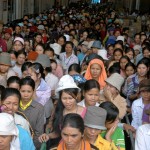Forest classifications
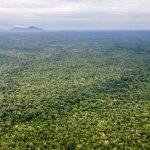
The classification of forests is set out in the Law on Forestry 2002. The law applies to both natural forests and plantations, and “defines the framework for management, harvesting, use, development and conservation of the forests in the Kingdom of Cambodia. The objective of this ...
Non-renewable energy production
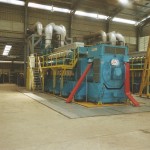
Non-renewable energy sources are chiefly fossil fuels such as coal, diesel, oil and gas. They provide most of Cambodia’s locally-produced electrical supply – in 2011 diesel and heavy fuel oil generators provided 89% of local electricity generation. ...
Community fisheries
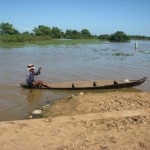
Community fishery refuges, Battambang, Cambodia. Photo by Alan Brooks/WorldFish, taken on 2 November 2011. Licensed under CC BY-NC-ND 2.0.Fishing practices in Cambodia are classified into three broad categories: small-scale or family fishing, medium-scale and large-scale or commercial fishing.In 2001, aware of the need to safeguard ...
Fish farming and aquaculture
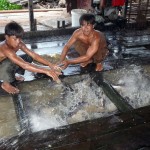
Fish farmers operating cage culture, Cambodia. Photo by O. Joffre/WorldFish, taken on 3 October 2009. Licensed under CC BY-NC-ND 2.0.Aquaculture production has grown significantly. In 2012 it stood at 74,000 tonnes, or almost 11 percent of total fishery production. By 2016 it had grown to ...
Provincial and local governments
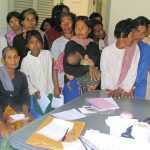
Patients are registered during the outreach screening at Vien Health Center. Photo by Community Eye Health, taken in 2006. Licensed under CC BY-NC 2.0The Kingdom of Cambodia is an indivisible state. The country’s administration at all levels and in all sectors falls under the same ...
Fishing, fisheries and aquaculture
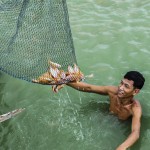
Cambodian fish farmer checking on fish quality. Photo by U.S. Agency for International Development (USAID), taken on 16 October 2012. Licensed under CC BY-NC-ND 2.0.Cambodia’s inland capture fisheries are among the largest in the world. The fishing industry encompasses subsistence, commercial and recreational fishing, as ...
Pollution and waste
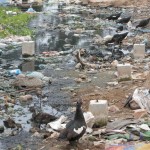
The rapid economic and population growth in Cambodia is leading to significant environmental pollution. The economic development activities have generated major environmental consequences, including air pollution, water pollution, noise pollution and solid wastes. ...
Forest cover 2015 - Present

According to the report on Cambodia Forest Cover 2018 issued on December 2020 by the Ministry of Environment (MoE),57 Cambodia has conducted eight national forest assessments in 1958/65, 1992/93, 1996/97, 2002, 2006, 2010, 2014, 2016, and 2018. The forest cover assessment from 1958-1965 has not ...
Social land concessions
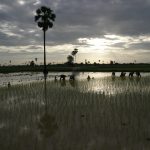
Social land concessions (SLCs) are intended to provide to the landless or land-poor land on which to establish residences and/or generate income through agriculture. The Cambodian Government that more than 30,000 households have received land as social land concessions. Despite its pro-poor intention, the SLC ...
Public revenues from extractive industries
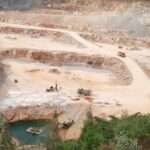
Extractive industries include mining and mineral sectors, natural gas and oil exploration, petroleum refineries, and quarrying for construction resources such as sand, stone, and gravel. Cambodia’s extractive resources have gone largely untapped, while these resources are geographically identifiable.The government considers extractive industries a potentially important ...
ODC Resources at Work & Honorable Mentions
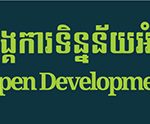
By making information accessible to anyone with an internet connection, ODC facilitates rational, fact‑based dialogue, improved communication, strengthened policy making, and better development planning across all sectors. The ODC website has been featured on Le Petit Journal, an online French newspaper, as a case of ...
Development and assistance for poverty reduction and food security

USAID’s Harvest program is helping Cambodia’s farmers. Photo by USAID, taken on 09 December 2013. Under the license CC BY-ND 2.0.The country has achieved remarkable sustainable growth, however, poverty and food security remain the challenges. The Royal Government of Cambodia (RGC) has acknowledged that to ...
BarCamp Sihanoukville 2013 Recap

On December 7th and 8th, a small team from ODC jumped in a bus and traveled to Kampong Som to participate in BarCamp Sihanoukville. The conference was held at Build Bright University. The day-and-a-half-long event featured presentations from specialists of many fields and interests, including ...
Administration
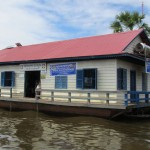
Cambodia’s sub-national administration consists of three tiers: capital city/province, municipality/district and sangkat/commune. Phnom Penh is the capital, and there are 24 provinces, 159 districts (including 26 municipalities and 12 khans), 1406 communes and 227 sangkats. ...
Special economic zones

A Special Economic Zone (SEZ) is a defined area within a country that is subject to different laws and regulations than other areas of the country. These comprehensive industrial areas provide preferential incentives to investors and offer government import-export administrative support to facilitate trade. Though ...
SDG 18 Cambodia mine/ERW free
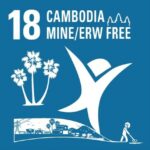
Cambodia has added an 18th goal to its localized version of the Sustainable Development Goals (SDGs) – “End the negative impact of mines/ERW and promote victim assistance”.109 The SDGs were adopted by all United Nations member states in 2015 as a universal call to action ...
Infrastructure
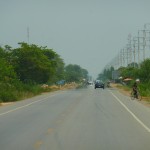
A national road in Cambodia. Photo by Pat Scullion, taken on 2 April 2010 under CC BY-NC-ND 2.0Infrastructure describes the built assets that allow a country to function, such as roads, railways, ports, airports, communication systems, electricity and drinking water distribution networks. The Ministry of ...


